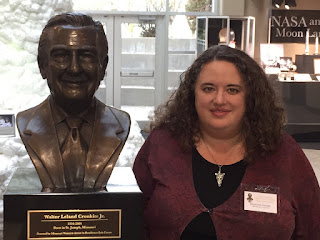Brad Admire is dead. I never met him.
Brad was 17 years old when he was injured playing high school sports. He had surgery on his shoulder, and the doctors gave him opiate-based pain pills during his recovery.
You probably know where this story is going.
Four years later, I interviewed Brad’s father, Dave Admire. I was doing a project on the heroin epidemic, and finding out more and more that it was inextricably tied to the massive use of opiate-based pain pills. There’s a lot of debate and more than a little shouting on this issue, and this is not the place for that debate. I’m here to tell you about Brad, and his father.
Within weeks of his surgery, Brad was hooked on Vicodin. When the prescriptions went away, he turned to heroin, buying tabs on the street for $10 a pill. Admire told me that the majority of addicts he worked with started that way: pain pills for dental surgery or a broken bone. “Not too many just decided to try heroin,” he said.
Three months later, Brad told his father he had a problem. Dave had him in treatment the very next day.
It didn’t take. By the time I met Dave, his son had been through five or six rounds of treatment, a six-month incarceration and at least three overdoses that he knew of. In one of those cases, Dave told me, Brad’s “friends” had stolen his wallet and dumped him in an emergency room.
In Illinois, an addict is lucky to get 30 days inpatient treatment, which apparently isn’t enough for a beast with as many tentacles as heroin.
I didn’t interview Brad. At the time that I met him, Dave had shipped Brad to Florida where he could get a 60-day program, followed by two months outpatient in a sober living house. “Today he’s good, but you never know what tomorrow will bring,” he said.
The doctors say one of the worst things for an addict is get distracted from their recovery with a lot of pressure about “How’s it going? When do you think you’ll be out?” In other words, everything a reporter might ask. It wasn’t my first round with this issue; in other stories, I’ve been faced with the dilemma of whether to interview someone who might be seriously damaged by it. In the case of a legislator who entered Betty Ford for addiction, I had to argue down an editor who was absolutely sure I could get him on the phone from rehab.
Maybe I could. Maybe not – Betty Ford is pretty tough on their rules. But the ethical precept of “minimize harm” as established in the Code of Ethics means that I don’t hurt people to get a story.

So I interviewed Dave instead, who was brutally honest about the pain his family had gone through. Addicts leave a wake of pain in their path, not the least of it around themselves.
Dave told me one day he had to refuse Brad entry to the house. “It was snowing and he was beating on the door, and I had to tell him no,” Dave said. “I had to force him to the rock bottom.” As a parent, I could not possibly imagine doing that, but they say it’s necessary. Addicts need a reason to get clean, and they destroy every relationship around them before they reach that rock bottom, or so the experts say. How many parents and siblings have had to make that choice, to “love them from a distance,” as Dave put it?
Dave made it his mission to help other families navigate the morass of treatment options, with and without insurance. Somehow word spread and people knew he was the guy to call. He told me he had kids on eight-week waiting lists, kids who were slipped a tab at a party, and suddenly there’s a beastly hunger awake and raving through their blood. That’s perhaps hyperbole, and perhaps not, as the endless hearings and workshops and think tanks I’ve observed over the years talk about neurons and receptors and susceptibility to dependence in the human brain, stewing in its mix of chemicals.
It was Dave who came to mind a year later when my son sustained a minor injury on a camping trip. He came home from the ER with a bottle of narcotics. The doctors gave opioids to a sixteen-year-old kid with a minor muscle strain without even trying aspirin first. I couldn’t get those pills away from him fast enough, afraid of the beast. We were lucky.
Dave and Brad were featured in a documentary called “The Heroin Project,” co-produced by my now-colleague Cory Byers and then-grad student Ashley Seering. Dave was working with law enforcement to find ways to help addicts get into treatment instead of prison. He appeared on a panel with U.S. Sen. Dick Durbin – which is how he came to my attention – and talked with raw honesty about the impact the epidemic is having on families.

There were a lot of politicians and officials on that panel, but then there was Dave, speaking with quiet dignity; and a local principal, Kari Karidis, who spoke about the day she got the worst possible call: her son had died of a heroin overdose.
One of the hardest things a journalist must learn, and which I try to teach my students, is the compartmentalization of emotions and opinions. Reporters cannot help but form opinions because we have working brain cells, and if we ever stop feeling our emotions entirely, we have lost our connection to humanity and need to quit the job. But we must take those emotions and opinions and set them apart from the work. There’s a story to be written, and no one will take it seriously if you’ve slipped from reporter to advocate.
But when I read yesterday that Brad Admire died of an overdose on Sunday, my heart simply broke for the father I interviewed years ago, and the family ripped apart over what seemed like innocuous pills. I never did have enough callouses to keep me from feeling the job, and maybe that made me less than the reporter I could have been.
When I wrote the story of the Admire family, Madison County, Illinois had reached a then-staggering 77 opioid overdoses in a single year. In 2009, the total was seven.
Days before Brad Admire overdosed, Madison County’s coroner Steve Nonn announced that with more than month remaining in 2018, 92 people have died of an opiate overdose. It’s a grim new record. While there have always been overdoses, take a look at the chart at the other end of this link and you’ll see why opioids stand out. More than 72,000 dead last year, and now that fentanyl is being mixed into other drugs, there seems to be no end in sight.
There’s no moral to the story, no uplifting ending. As a journalist, it isn’t my place to suggest policy or issue a call to action. It probably isn’t my place to grieve for the Admire family, to think of the stalwart father who sat across from me in a library one afternoon and shared his family’s most painful, raw tragedies with me and our readers.
But as keepers of the record, it’s beholden upon us to tell the whole story. And the whole story is that this time, the beast won.




